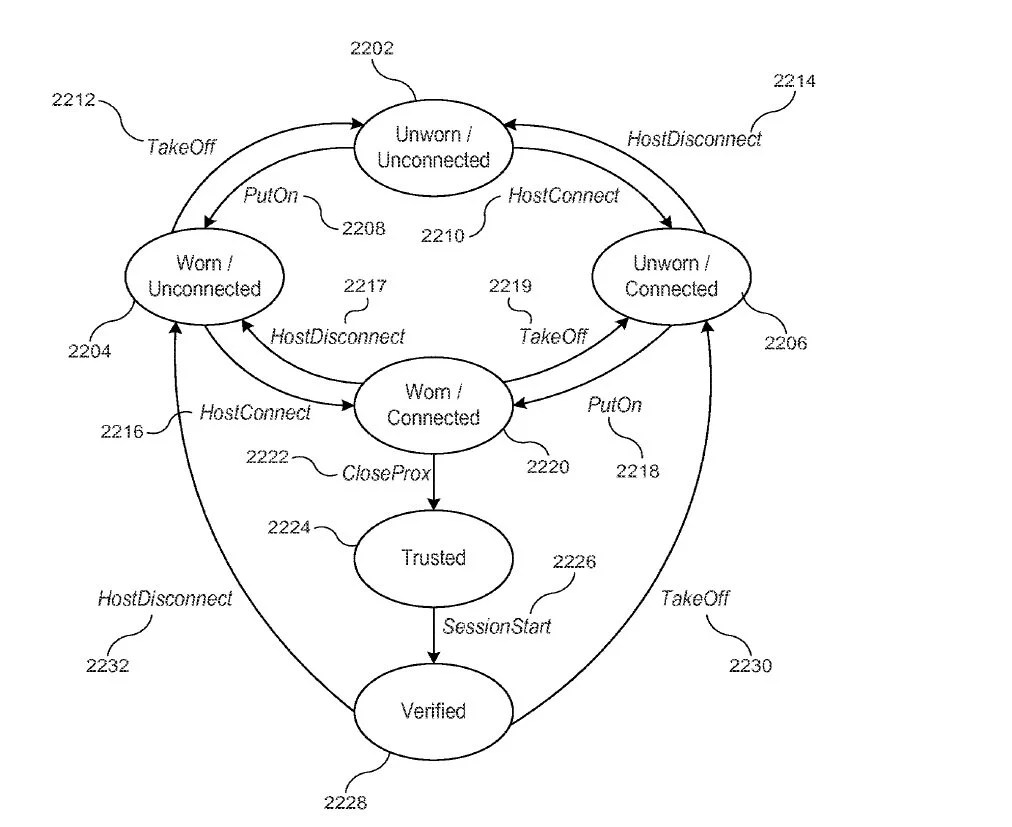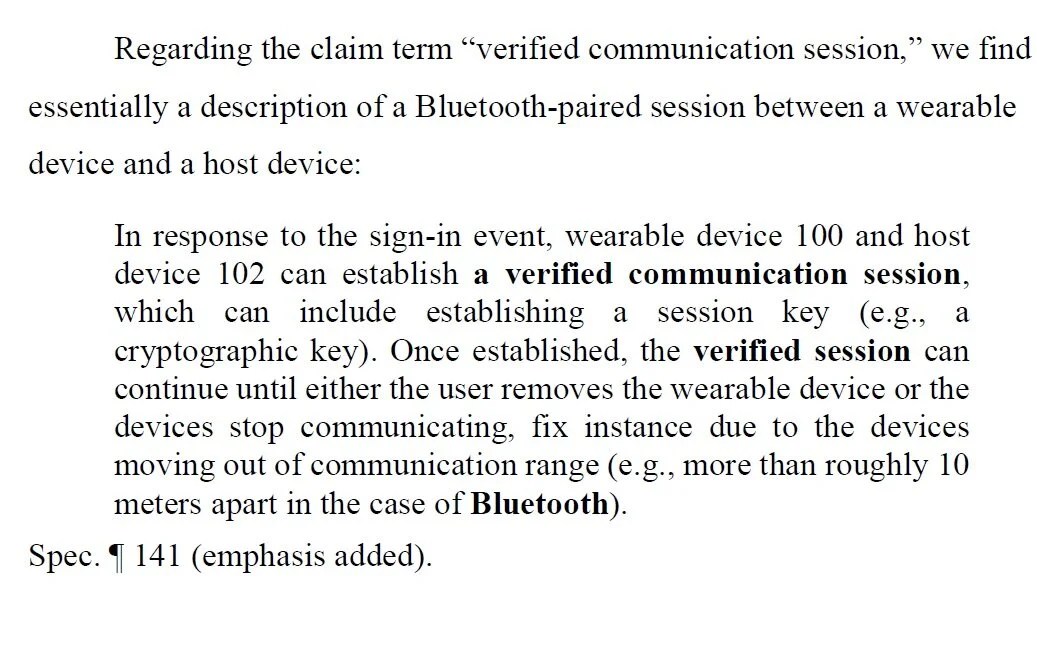A proper claim interpretation must be consistent with an applicant’s specification and figures, even under the Broadest Reasonable Interpretation standard used by the USPTO. When there is a dispute about the cited art showing certain limitations, applicants can often get caught up in the disclosure of the reference without sufficiently explaining the proper interpretation in light of the specification and figures. Examiners and PTAB judges will use any opening to argue that the specification confirms a broad interpretation, even when the connection is dubious, and especially when the applicant does not head it off beforehand.
An example is illustrated in a recent PTAB decision for an Apple invention (14/775,349) related to smart watch communication sessions. The invention provides for a verified session to enable communication with a host device so that the smart watch can provide access to various functionalities of the host device, including using the watch to facilitate a purchase transaction with a point-of-sale terminal in a store. Clearly, these are important features of the Apple Watch and so Apple was keen to protect them. Claim 1 on appeal is listed below:
A method of managing user account data performed by a wearable device, the method comprising:
establishing, by the wearable device, a verified communication session with a host device, the verified communication session being established while the wearable device is being worn and while the host device is within a threshold distance of the wearable device; receiving, by the wearable device, user account data from the host device during the verified communication session; storing, by the wearable device, the received user account data in a storage medium of the wearable device; providing, by the wearable device, a subset of the stored user account data to a checkpoint terminal; and
in the event that the wearable device ceases to be worn, deleting, by the wearable device, the stored user account data from the storage medium.
One issue on appeal was the “verified communication session.” As described in Apple’s specification and figures, while the wearable device communicates with the host via Bluetooth, the invention provides an additional level of secured communication. The figure below, from Apple’s application, illustrates that merely being connected is not the same as being verified. Numerous other portions of the specification make this very clear, where the Bluetooth connection itself must first be established before the verification process can occur.

The rejection relied on a combination of references but none showed a verified communication session as claimed. Apple pointed this out quite clearly, and the examiner’s response on this point appeared rather weak. Nevertheless, the PTAB found that the rejection was proper under the BRI. Specifically, the PTAB alleged that Apple’s specification was written in a way that described a Bluetooth connection as one example of a verified communication session. If that is true, then the PTAB has a point. The opinion explained the issue as follows:

Even from this citation, however, the specification does not “essentially” say that Bluetooth itself is a verified communication session at all. And when put into context with the rest of the specification, it is disingenuous to assert as much. For example, at paragraph [0215] of the specification, it explains that the Bluetooth connection is distinct from the concept of a verified session:
In some embodiment, defining a pairing (e.g., via Bluetooth paring or another process) between the host device and the wearable device can be a prerequisite of establishing a verified session.
Of course in hindsight, had Apple known such an argument would be relied upon by the Board, they could have pointed out the proper interpretation much better than the quick summary above. But that is the situation – on appeal applicants must assume that some in the USPTO will try to misinterpret the claims in a way that enables affirming the rejection. If Apple returns to prosecution they might consider adding the pairing (via Bluetooth) as an additional (prerequisite) step in the claim so that it is expressly clear that the verified session is distinct therefrom.

Leave a comment